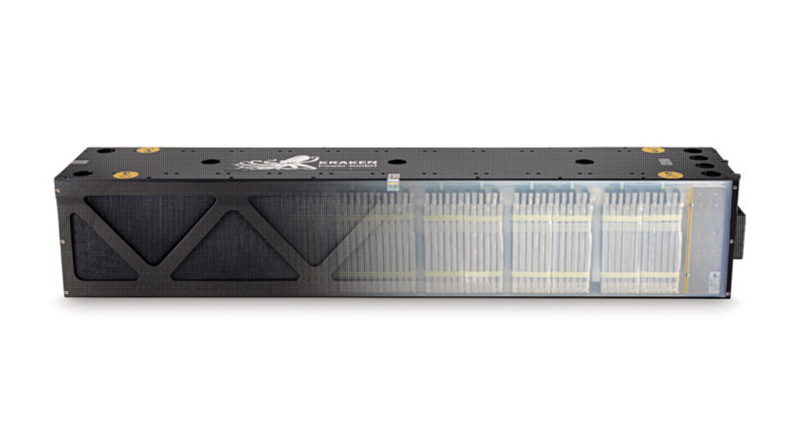Doubling Underwater Endurance: Kraken Robotics Secures $13M in SeaPower Battery Orders
Kraken Robotics, a leader in marine technology, has made significant strides by securing $13 million in orders for its SeaPower™ subsea batteries. These batteries, designed for operations at depths of up to 6,000 meters, offer twice the energy density and are 46% lighter per kilowatt-hour than conventional pressure-housed batteries. This innovation positions Kraken at the forefront of subsea energy storage technology, with both commercial and defense sectors adopting these solutions to power unmanned underwater vehicles (UUVs).
SeaPower’s success lies in Kraken’s proprietary polymer encasing, which eliminates the need for bulky pressure housings or oil compensation. This breakthrough frees up valuable space within the UUVs, allowing for a larger energy capacity and reducing overall weight. The result is a doubling of vehicle endurance compared to traditional batteries, proving crucial for extended deep-sea missions.
Growing demand for efficient underwater energy storage
The rapid rise of UUVs in industries such as oil and gas exploration, subsea surveying, and military applications has heightened the demand for reliable, high-capacity energy storage solutions. Historically, pressure-housed batteries have dominated the market but come with significant drawbacks, such as added weight and space limitations. Kraken Robotics identified this gap and developed the SeaPower battery to address these challenges head-on.
With SeaPower integrated into large and extra-large UUVs, Kraken’s customers have seen a substantial increase in mission duration and operational cost savings. This solution directly tackles the size-weight-power trade-off that has long constrained the design of efficient UUV systems.
SeaPower batteries: A game changer in deep-sea robotics
Kraken Robotics’ SeaPower batteries represent a shift in how subsea missions are powered. The key innovation—a proprietary polymer encasing—revolutionizes battery design by removing the need for pressure housings. This technological leap allows UUVs to perform longer missions without compromising their agility or requiring additional space for heavier, traditional energy storage systems.
The batteries are currently deployed in large UUVs around the world, supporting critical missions in defense and commercial sectors. SeaPower’s ability to reduce vehicle weight while increasing energy capacity has made it indispensable for operators who need reliable performance in harsh, deep-sea environments. Kraken’s focus on delivering cost-effective, high-performance batteries has enabled many clients to extend mission durations, reduce downtime, and increase overall operational efficiency.
Kraken Robotics vs. Competitors
In a competitive landscape that includes Teledyne Marine, Voyis, and Liquid Robotics, Kraken Robotics continues to distinguish itself through superior energy density and innovation in subsea battery design. Teledyne Marine, with a broader product portfolio, leads the market in terms of revenue, but Kraken’s focused approach in subsea energy storage places it ahead in terms of technological advancement.
The SeaPower batteries not only outperform traditional pressure-housed models but also provide a significant competitive edge by enabling longer missions at a lower cost. While Teledyne Marine has a large market share, Kraken’s ability to tailor its solutions for specific applications in both commercial and defense sectors has earned it a strong reputation as an industry innovator.
Kraken Robotics also plans to extend its battery solutions to smaller and medium-sized UUVs. This expansion will enable Kraken to tap into new markets where smaller UUVs are gaining traction, such as environmental monitoring and infrastructure inspections. These vehicles, while smaller in size, still require advanced energy solutions to operate efficiently over long durations.
Sources:
